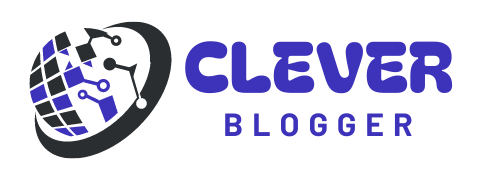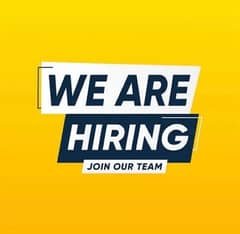The role of graphic designers is undergoing rapid transformation as the digital landscape evolves. With businesses placing greater emphasis on visual content, staying relevant and competitive in this shifting industry is increasingly challenging.
As the demand for innovative and engaging visual content grows, so does the need for graphic designers to adapt quickly. The pressure to keep up with new tools, design trends, and evolving client expectations can be daunting.
How can you ensure you’re prepared for these changes and remain a sought-after professional?
To navigate the evolving world of graphic design in the coming year, focus on continuous learning and adaptation.
Stay informed about emerging trends, master the latest design tools, and refine your skills to meet new demands. By proactively embracing these changes, you can position yourself as a leading candidate and stay ahead in the competitive graphic design field.
1. The Rise of AI and Automation in Design
One of the most significant changes in the world of graphic designer jobs is the integration of artificial intelligence (AI) and automation tools. These technologies are transforming the way designers work, allowing them to streamline repetitive tasks and focus on more creative aspects of their projects. AI-powered design tools can help with tasks such as generating layout options, selecting color schemes, and even creating custom graphics based on data input.
While some may fear that AI could replace human designers, the reality is that these tools are more likely to complement their work. By automating mundane tasks, designers can devote more time to conceptualization, strategy, and refining their creative ideas. Staying updated on the latest AI tools and learning how to incorporate them into your workflow will be crucial for remaining relevant in the field.
2. Increased Demand for Versatile Skills
As the scope of graphic designer jobs expands, so does the demand for versatile skills. Employers are increasingly looking for designers who can wear multiple hats—those who not only excel at traditional graphic design but also have knowledge in areas like web design, UX/UI design, and even motion graphics. The ability to work across different media and adapt your designs for various platforms will make you a more valuable asset to potential employers.
For instance, as social media continues to play a crucial role in marketing strategies, designers who can create engaging content tailored to these platforms will be in high demand. Similarly, understanding the principles of user experience (UX) and user interface (UI) design can open up opportunities to work on websites, apps, and other digital products.
3. The Growing Importance of Remote Work
The shift towards remote work, accelerated by the global pandemic, has had a lasting impact on graphic designer jobs. More companies are embracing remote or hybrid work models, which means designers can work from virtually anywhere. This trend is expected to continue, offering greater flexibility and the possibility to collaborate with global teams.
However, remote work also brings new challenges, such as the need for strong communication skills and the ability to manage projects independently. Designers who can effectively collaborate with teams across different time zones and communicate their ideas clearly through digital platforms will thrive in this environment.
- Flexibility and Work-Life Balance: Remote work allows designers to create a work schedule that fits their lifestyle, leading to improved work-life balance and increased Best Remote job satisfaction.
- Access to Global Opportunities: Remote positions enable designers to work with international clients and teams, broadening their career opportunities and exposure to diverse projects.
- Enhanced Productivity: Many designers find they are more productive when working from home, free from office distractions and with the ability to create a personalized workspace.
- Cost Savings: Remote work eliminates commuting expenses and can reduce costs related to maintaining a physical office, benefiting both employers and employees.
- Advanced Collaboration Tools: Embracing tools like Slack, Zoom, and Asana helps remote designers stay connected, manage tasks, and collaborate effectively with team members across different locations.
- Continuous Learning and Growth: Remote work encourages self-discipline and continuous learning, as designers must independently stay updated on the latest tools and trends.
- Environmental Impact: Reducing the need for commuting and office resources contributes to a lower carbon footprint, supporting sustainability efforts.
4. Sustainability in Design
Another key trend shaping the future of graphic designer jobs is the growing emphasis on sustainability. As consumers become more environmentally conscious, businesses seek ways to reflect these values in their branding and marketing efforts. This means that designers must incorporate sustainable practices into their work, such as using eco-friendly materials, reducing waste in print production, and creating designs that promote sustainable products and practices.
Designers who are knowledgeable about sustainability and can offer solutions that align with a company’s environmental goals will be increasingly sought after. This trend also presents an opportunity for designers to be more thoughtful about the impact of their work and contribute to a more sustainable future.
5. The Role of Continuous Learning
Continuous learning is essential for anyone pursuing a career in graphic design. As new tools, trends, and technologies emerge, staying ahead of the curve requires a commitment to ongoing education. Whether through online courses, workshops. Or self-directed learning, investing in your skills will help you adapt to changes in the industry and keep your portfolio fresh.
Designers should also consider exploring adjacent fields, such as coding, marketing, or data visualization, to expand their expertise and offer more comprehensive services. Blending design with other disciplines can set you apart in a competitive job market.
6. The Future of Graphic Designer Jobs
As we look ahead to the next year, it’s clear that graphic designer jobs will continue to evolve. Shaped by advancements in technology, changes in work environments, and shifting consumer expectations. For designers, this presents both challenges and opportunities. By staying informed about industry trends, diversifying your skill set. And embracing new ways of working, you can position yourself for success in this dynamic field.
- Embrace Emerging Technologies:
- Stay updated on advancements such as augmented reality (AR), virtual reality (VR), and artificial intelligence (AI) in design. Understanding these technologies will keep you at the forefront of innovative design solutions.
- Expand Your Skill Set:
- Diversify your skills beyond traditional graphic design. Learn about user experience (UX) design, motion graphics, 3D modeling, and web design to enhance your versatility and marketability.
- Adapt to New Work Models:
- Be flexible with remote and hybrid work environments. Develop strong self-management skills and proficiency with digital collaboration tools to excel in various work settings.
- Stay Current with Design Trends:
- Stay aware of design trends, such as minimalism, sustainability, and data visualization. This will help you create relevant and contemporary designs.
- Enhance Communication Skills:
- Work on your ability to clearly articulate design concepts and collaborate effectively with clients and teams across different time zones.
- Invest in Continuous Learning:
- Participate in workshops, online courses, and industry conferences to stay ahead of the curve and refine your skills. Regularly update your portfolio with new projects to showcase your growth.
- Build a Personal Brand:
- Develop a strong personal brand through a professional online presence. Including a well-curated portfolio and active engagement on social media platforms relevant to the design community.
- Explore Niche Markets: Identify and specialize in niche markets or industries where your unique skills can stand out. This could include eco-friendly design, health tech, or interactive media.
| “Stay ahead in the evolving world of design—keep learning, stay adaptable, and secure your future in graphic designer jobs!” |
TAKEAWAYS:
- AI and Automation Integration: Utilize AI and automation tools to streamline tasks and focus on creative aspects. These tools complement rather than replace human designers.
- Versatile Skills: Develop skills beyond traditional graphic design, including web design, UX/UI, and motion graphics, to increase job market value.
- Remote Work: Embrace remote or hybrid work models by honing communication skills, managing projects independently, and using advanced collaboration tools.
- Sustainability: Incorporate eco-friendly practices in design and align with companies’ environmental goals to meet rising consumer expectations for sustainability.
- Continuous Learning: Invest in ongoing education through courses, workshops, and industry updates to stay relevant and expand your skill set.
- Emerging Technologies: Stay informed about technologies like AR, VR, and AI to remain at the forefront of innovative design solutions.
- Adaptability: Be flexible with work models and trends. And develop a strong personal brand and niche expertise to stand out in a competitive field.




